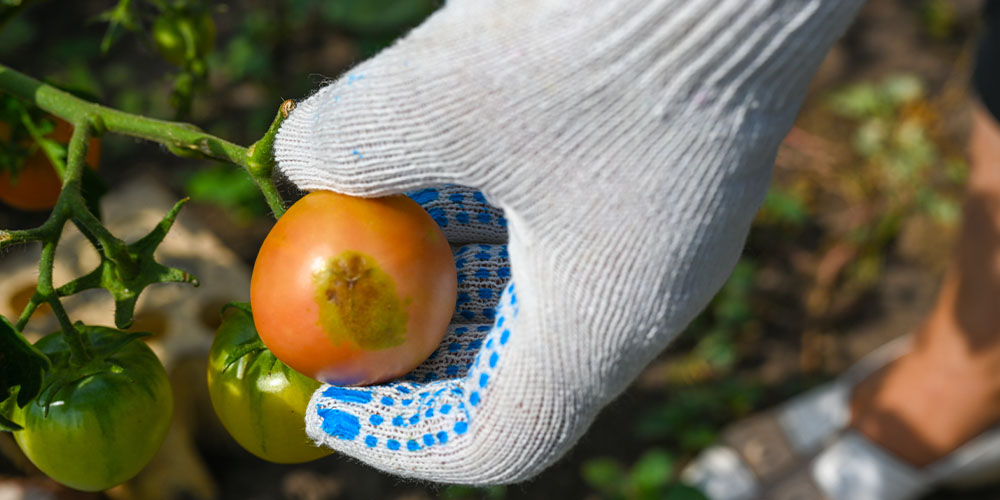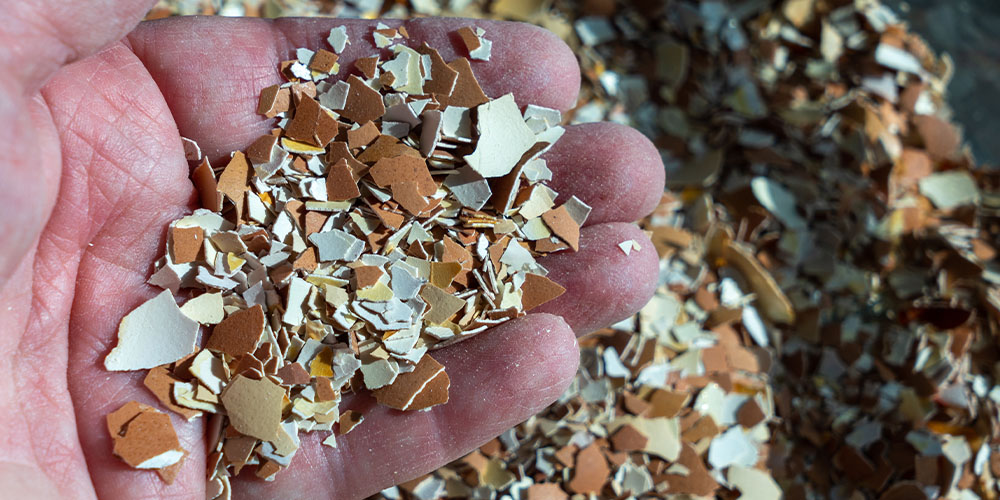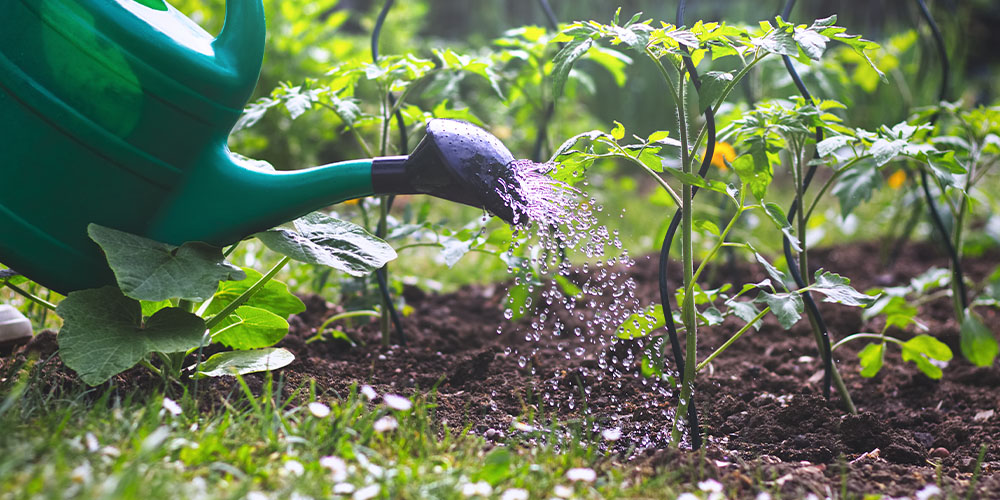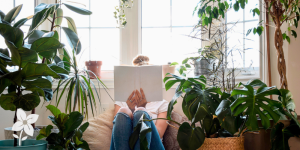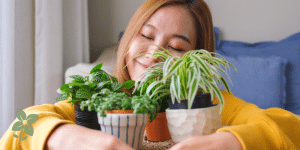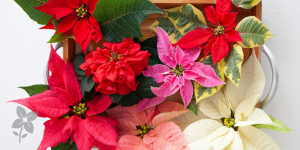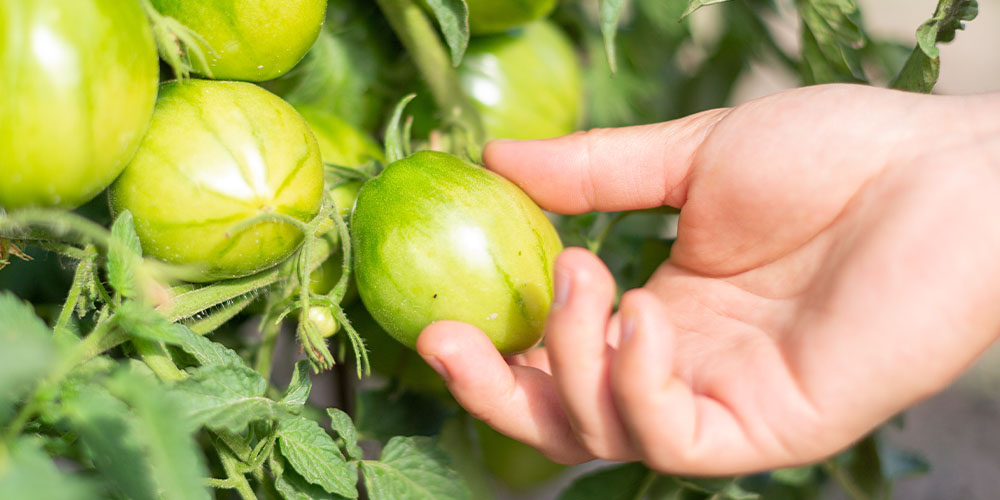
Is there anything more frustrating than excitedly picking your first harvest of tomatoes, only to discover they’ve got soggy, rotten bottoms? Gross! Now, if you’re new to vegetable gardening, you might panic and assume this problem is caused by a pest or fungus. Thankfully, that isn’t the case””it’s just blossom end rot, and its prevention and treatment couldn’t be more simple! If you catch the problem early, you can save your plant, and all the future tomatoes it produces will come out firm and juicy””no soggy bottoms whatsoever.
What Is Blossom End Rot?
Blossom end rot is a condition caused by a vitamin deficiency””calcium, specifically! It’s most common in tomatoes but can also occur in vegetables like peppers, eggplants, cucumbers, melons, squash, and zucchinis. Vegetable plants absorb nutrients””like calcium””from the soil, so if there isn’t enough calcium in the soil, that’s usually the cause of blossom end rot. However, a damaged or dehydrated plant may also suffer from blossom end rot if it cannot properly soak up nutrients.
How Do You Prevent Blossom End Rot?
There are several methods for blossom end rot prevention and treatment. Taking some of these steps before planting will save your veggies from meeting an untimely end, but they also work as treatment options if you spot blossom end rot early in the growing season. Indeterminate tomatoes will keep producing fruit until frost, so if you catch blossom end rot early on, there’s no need to toss out your plant! These simple methods will help keep your tomatoes plump, juicy, and blemish-free.
Perform a Soil Test
Fresh potting soil from the store is typically quite rich in nutrients, but if you’ve used the same soil in your garden bed for years, it’s probably pretty depleted. A soil test will tell you if anything essential for your plants’ health is missing from the soil. It also gives you a reading of the soil’s pH levels, so if they’re way out of whack, you can add some amendments to neutralize the pH.
Collect Your Eggshells and Crush Them Up!
Another great natural source of calcium is eggshells. If you go through a lot of eggs at your house, keep those shells, rinse them off, crush them up, and mix them into the soil. It’s a simple way to combat blossom end rot, and it doesn’t cost a dime!
Use Calcium-Fortified Vegetable Fertilizer
Regularly fertilizing your vegetable plants is important if you want big, high-quality yields and no blossom end rot. Fertilize at least once per month with a fertilizer formulated especially for vegetables. Most fertilizers will have a ratio of nitrogen, phosphorus, and potassium content””the main macronutrients that plants need””but many are fortified with additional nutrients like calcium and magnesium. Check the package to see if it’s got that added calcium, and you’re good to go!
Remember to follow the directions on your fertilizer package carefully. Don’t add more than you’re supposed to””it will make your plant grow way too fast, and the growth will be weak and spindly! It’s like coffee””if you have one cup, you’ll get a nice boost, but if you drink a huge pot, you’ll get so jittery and speedy that you’ll struggle to function!
Water Consistently in the Morning
Stress from inconsistent watering and dehydration can interfere with your plants’ ability to soak up nutrients, leading to blossom end rot even if there’s plenty of calcium in the soil. Maintain a consistent watering schedule, and try to water early in the morning before the soil heats up and dries out. The water will act like an insulator around your plants’ roots, making them less likely to suffer from heat stress.
Add Bone Meal to the Soil
Calcium builds strong bones in animals, so bone meal is an incredible source of natural calcium to prevent blossom end rot! Simply add it into the holes where you plan on planting your vegetables, mix it into the soil a bit, transplant your plants, and water them in. That should provide plenty of calcium to keep them producing fully formed fruits all summer long!
Avoid Damaging Plant Roots
Damaged roots can’t do their job! When transplanting your veggie starters, inserting stakes or tomato cages, or digging around in the soil nearby, be very careful not to harm those roots. Roots are like the central nervous system of your plant, and driving a stake right through the centre is basically a botanical lobotomy! Be gentle with your plant; they’ll reward you with plenty of tasty fruits at harvest time.
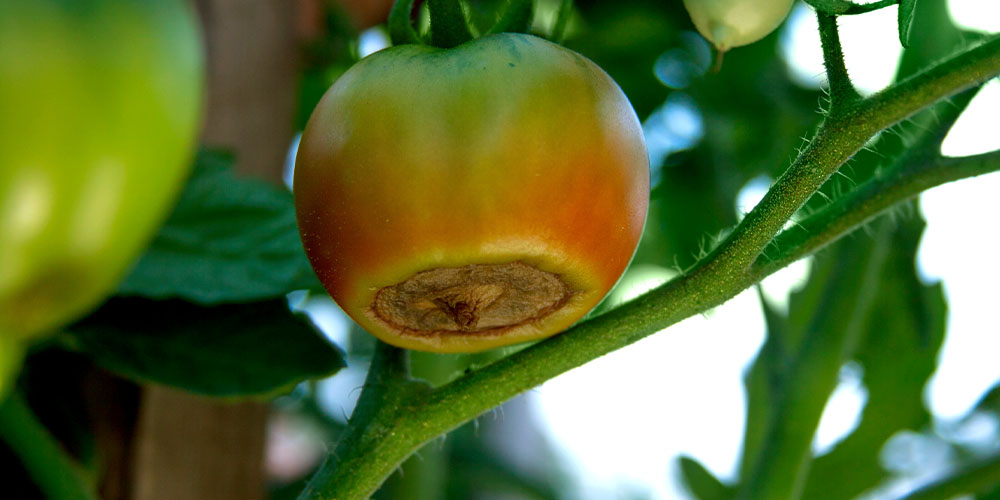
If you’re struggling with blossom end rot in Edmonton, or have any questions about vegetable disease prevention, don’t hesitate to ask our experts at Salisbury Greenhouse in Sherwood Park and St. Albert! We’ve been in the biz for a long time and know all the tricks for keeping your plants safe and healthy.

